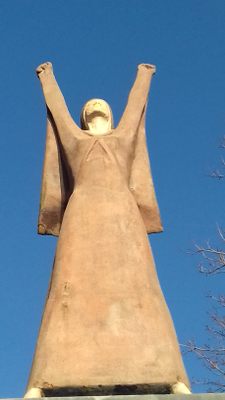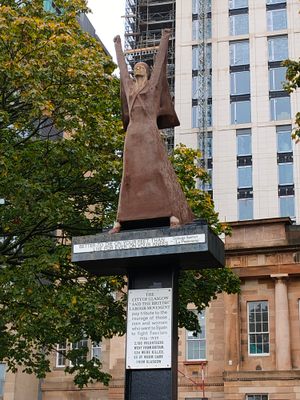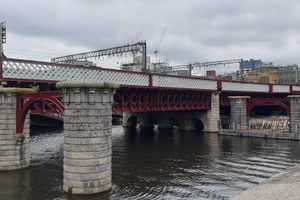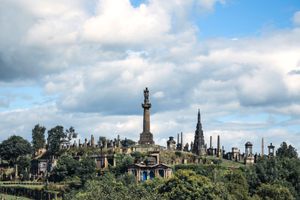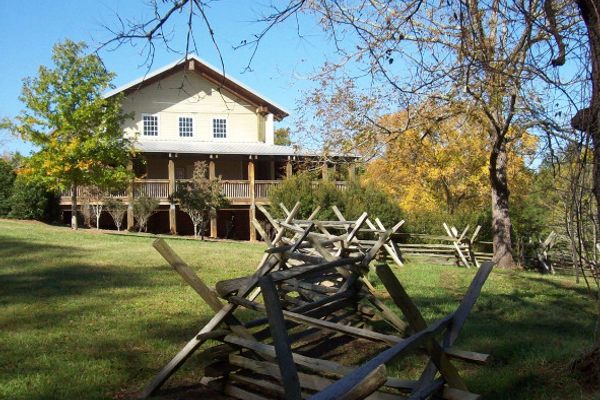About
Arms defiantly outstretched, face raised to the sky, the figure of La Pasionaria looms large over the banks of the River Clyde in central Glasgow. La Pasionaria" ("The Passion Flower") was the pen name of Dolores Ibárruri, a Spanish Republican politician, communist, and prominent anti-fascist propagandist during the Spanish Civil War of 1936 to 1939.
La Pasionaria served as inspiration for sculptor Arthur Dooley in 1974, when the International Brigades Association of Glasgow commissioned him to create a memorial to British citizens who served in the brigades during the war. The brigades were comprised of volunteers from across Europe who came to Spain to aid the fight against a fascist insurgency. Hundreds of volunteers from Britain died in the conflict, all sadly in vain as the fascists rose to power under the leadership of Francisco Franco. It was Ibárruri who gave a heartfelt farewell speech to departing foreign fighters when defeat by the fascist forces became inevitable.
Various trade unions and Labour movement supporters funded the memorial, with Dooley initially envisioning a magnificent bronze statue of La Pasionaria. Unfortunately, not enough money was raised and he had to fall back on the less illustrious materials of scrap iron and fiberglass.
The plan to create a monument using the overtly communist image of La Pasionaria on a nine-foot-high pedestal was seen as contentious and provocative in some quarters. A number of Conservative party councillors attempted to block the move and vowed to tear down the statue if they ever took overall control of Glasgow City Council. In one councillors’ words, Ibárruri was a “poisonous old brute” and a “notorious Communist war criminal.”
Despite opposition, the statue was completed and erected in December 1979. The unveiling was a largely low-key affair attended by various political and trade union representatives along with a number of International Brigade veterans. Ibárruri sent a telegram thanking those involved in erecting the statue, noting that she felt deeply honored.
As for the final fate of Ibárruri, after Spain fell to fascist forces, she lived in exile in Moscow for almost 40 years. It wasn’t until 1977, two years after the death of General Franco, that she was able to return. After her homecoming she was briefly re-elected to parliament at the grand old age of 81. She remained politically active up until her death in 1989, when she was 93 years old. Vocal and active until the end, she certainly lived up to the quote which now adorns her statue: “Better to die on your feet than live forever on your knees.”
Related Tags
Know Before You Go
The statue is located on Clyde Street at Custom House Quay.
Flavors of Scotland: Beyond the Haggis
Smoked seafood, single malt whisky, and warm hospitality.
Book NowPublished
December 12, 2019






